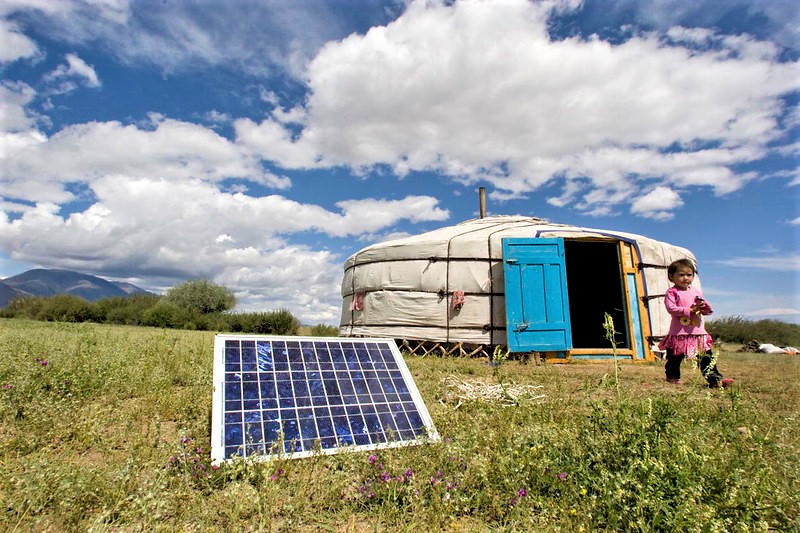It’s impossible to ignore the public health and economic crises ravaging our communities as a result of the coronavirus pandemic.
Yet, as we approach the 50th anniversary of Earth Day—the day in which activists, leaders, and global citizens unite to protect the environment—experts say an equally insidious crisis will affect us for far longer than the coronavirus: climate change.
The effects of climate change are widespread, but not all are well-known. Nowhere is this clearer than in the lack of gender data on how exactly women and girls are affected by climate change and environmental stress—and how they are involved in and leading on climate change adaptation and mitigation.
We know now that climate change is discriminatory; it both causes and reinforces poverty for many of the world’s most vulnerable communities. These communities are disproportionately impacted by adverse effects of climate change such as flood or drought-related food insecurity, forced migration, and public health challenges due to air pollution, lack of clean water, and poor sanitation. Making up 70% of the world’s poor, women represent an enormous proportion of those unduly affected by climate and environmental changes. And yet, the world’s data fails to represent their unique experiences and needs.
At Data2X, we believe you can’t fill gender data gaps without naming them. So, in our most recent report, we explored the status of gender data gaps in the environment domain for the first time. Overall, we found that there is a significant lack of data on gender and the environment—most environmental data contains little to no sex-disaggregation or gender analysis, while the environment (and thus climate change more broadly) remains on the margins of most gender equality work.
This dichotomy is problematic, as we increasingly understand that gender and the environment crosscut every development domain and that equitable responses to global development issues must consider both the gender and the environment implications.

In the report, we aim to shed light on this issue by identifying six of the most pressing gender data gaps in the environment domain. Many of these gaps have implications that extend beyond the environment into health, human security, and public participation-related SDG indicators.
- Women in environmental decision-making. While some governments and international organizations collect sex-disaggregated data on participation in environmental decision-making (such as the Women’s Environment and Development Organization (WEDO)), we lack data about women’s leadership roles in environment ministries, national green parties, environmental forums, governance bodies, and in natural resource sector workforces and organizations. Without this data, we can’t see the full picture of women’s representation—or lack thereof—in key environmental decision-making bodies, making it difficult to ensure their voices are heard and their needs are considered.
- Disaster-related mortality and morbidity. Due to the disruptive and challenging nature of environmental-related disasters, collecting data on mortality and morbidity—let alone data that is sex-disaggregated and gender-sensitive—is difficult. Even in situations where data collection is possible, forced displacement, damaged infrastructure, and ongoing environmental dangers cause additional challenges that hamper quality data collection.
- Disaster risk management. Disaster risk management, or the application of short-and long-term policies to prevent and mitigate environmental disaster risks, is key for preventing loss of life and infrastructure in communities all over the world. Aside from the Sendai Framework for Disaster Risk Reduction 2015-2030, which acknowledges a need for gender, age, cultural, and disability perspectives, there is no global standard for data collection on women’s participation in disaster risk management or for monitoring if disaster risk management policies are gender-sensitive.
- Women’s rights to land and natural resources. Women’s access to land and natural resources, as well as access to security, ownership, and management, is a critical driver of their economic, social, and political wellbeing given the livelihood opportunities they provide. Yet incomplete or missing data prevents us from understanding the diverse risks, opportunities, and benefits women face in this area.
- Consumption and production. Responsible consumption and production (Goal 12 of the Sustainable Development Goals) advocate for resource and energy efficiency, sustainable infrastructure, and access to basic services and decent jobs related to water, energy, and food. Even though women most likely differ from men in their consumption and production patterns, gender considerations are not integrated into this goal’s indicators, leaving a vast gender data and knowledge gap.
- Environment and health. Access to clean water, sanitation, and hygiene (WASH) and exposure to pollution, pesticides, and hazardous chemicals differ among genders, but we know that women and girls are disproportionately burdened by lack of access to WASH and exposure to pollution due to menstrual hygiene management and cooking responsibilities, respectively. Filling this gender data gap across a broad country level will lead to a better understanding of how the environment affects women’s health all over the world.
The above list of gaps is not exhaustive, but the dearth of data on these areas—and on gender and the environment more broadly—means governments and the global development community lack the necessary information to make informed decisions. It also means that it is difficult to ensure women’s voices are represented and valued in the decision-making process across the environmental sector, and that they feel empowered to be environmental leaders in their communities. This combination means we risk leaving out key gender considerations that are fundamental for global progress.
As we join forces on Earth Day with those in the United States and around the world, we call for the collection and use of quality sex-disaggregated data and gender analysis in environmental data and for the inclusion of environmental considerations in the gender equality space. Women’s and girls’ intentional or accidental exclusion from global data will only hinder our collective progress on slowing climate change and accelerating gender equality.
